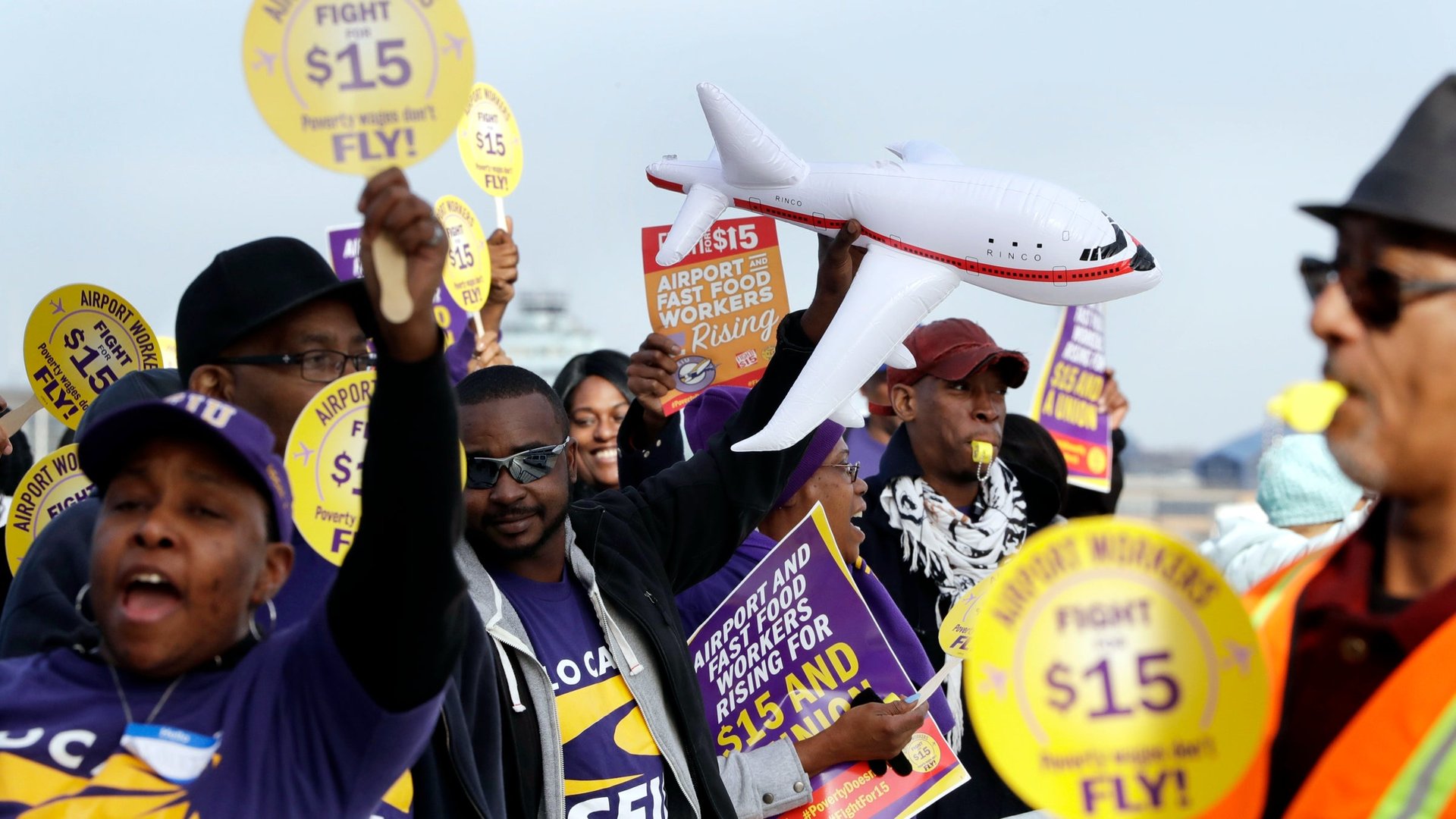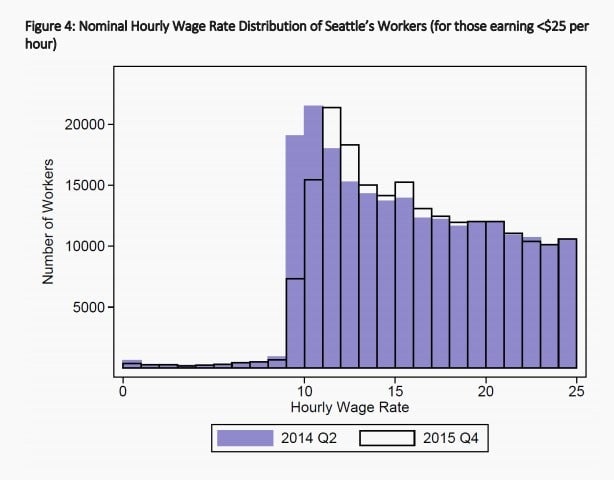Can Democrats use minimum wage hikes to rebuild their party? Let’s check the numbers
The success of local minimum wage laws and referenda in recent years have been a rare bright spot for Americans worried about wage stagnation and inequality.


The success of local minimum wage laws and referenda in recent years have been a rare bright spot for Americans worried about wage stagnation and inequality.
In 2016, 12 states and several major cities put hikes in the statutory minimum wage into effect. In November, voters in four more states pushed through increases at the ballot box, while lawmakers in three other states plus the District of Columbia also passed wage hikes this year. In the new year, 14 states will see minimum wage increases.
Critics of the movement to boost minimum wage fear that it will raise prices for consumers, reduce the number of part-time jobs and other low-skill work opportunities, especially for teenagers, and lead businesses to accelerate adoption of automation. Proponents of a higher wage floor argue that the overall benefits to workers exceed these costs—especially because of evidence that businesses can bear higher labor costs without driving up prices.
Researchers are watching the various local and regional experiments with interest to see if they can document any effects. A proof of concept is especially critical for Democrats. Their best hope of enacting progressive reforms will be, for the next four years at least, at the state and local level. But to further their agenda, they will need to show that their policies work.
The best case study we have on the recent minimum wage hikes involves Seattle, Washington, which chose to steadily raise its minimum wage to $15 over a decade, beginning in April 2015 with increases to $10 and $11 an hour, depending on the size of the business and the benefits it provides, from the state minimum of $9.32.
The University of Washington is using government data to track the effects of the law. Its most recent report (pdf)—covering the first nine months of increased wages, through the end of 2015—suggests that so far, the experiment is working as expected. But a big part of its success is Seattle’s economy, which is booming thanks to the growth in high-tech employment there.
The researchers said that low-wage workers saw increases in their earnings, and they were more likely to be employed and work longer hours than in recent years. But surrounding areas saw even more gains for these workers, leading the researchers to conclude that low-wage workers were marginally more likely to seek employment outside the city. The results, they said, were “mostly encouraging.”

The effects that the new law’s critics had feared—that the wage hike would have businesses laying off workers or closing their doors—didn’t show up in the data, although the researchers caution that it will be years before the full effects of the hike can be discerned, and that things may change as the minimum wage continues to rise.
The authors did estimate that new businesses were slightly more likely to open in Seattle since the measure’s passage, though as a young, growing metropolis with a high cost of living, Seattle may not be a perfect proxy for other cities. Still, there’s reason to believe there is room to for wages to grow across the country. For starters, 50 years ago, the US supported a higher national minimum wage, in real terms, than it has now.
The Seattle study isn’t the only evidence of effects from the recent wage increases.
Economists in the Obama White House studied 18 jurisdictions that hiked minimum wages in the last three years and found that they effectively boosted the earnings of low-income Americans. Yet they saw little effect on jobs overall, noting that “employment in the leisure and hospitality industry follows virtually identical trends in states that did and did not raise their minimum wage. Moreover, employment in this low-wage industry grew somewhat more quickly than employment in the private sector overall.”
It could be that the fears of minimum wage opponents are overstated. One innovative 2015 study examined prices at online menus from local restaurants in San Jose, California, after the city enacted a 25% increase in minimum wages, and found that restaurants were able to accommodate higher costs of doing business through minor price increases. By looking at restaurants within a half-mile of the city’s border, they were also able to demonstrate results “challenging the suggestion that local minimum wages disadvantage a city’s economic competitiveness.” These experiments, however, have benefitted from the steady growth of the Obama economy, with its record 72 months of labor market expansion.
With Donald Trump’s presidency on the horizon, Democrats locked out of national influence will no doubt continue to press a progressive agenda locally, in the cities and states where they have more sway. But as wage floors rise, especially in jurisdictions with older or shrinking populations, they will have to be pragmatic about overreach, keeping in mind the lesson of Kansas’ Republican governor Sam Brownback, who enacted a radical agenda in his state as an example to the nation—a conservative one, rather than a progressive one, it should be noted—and saw the local economy crumble.